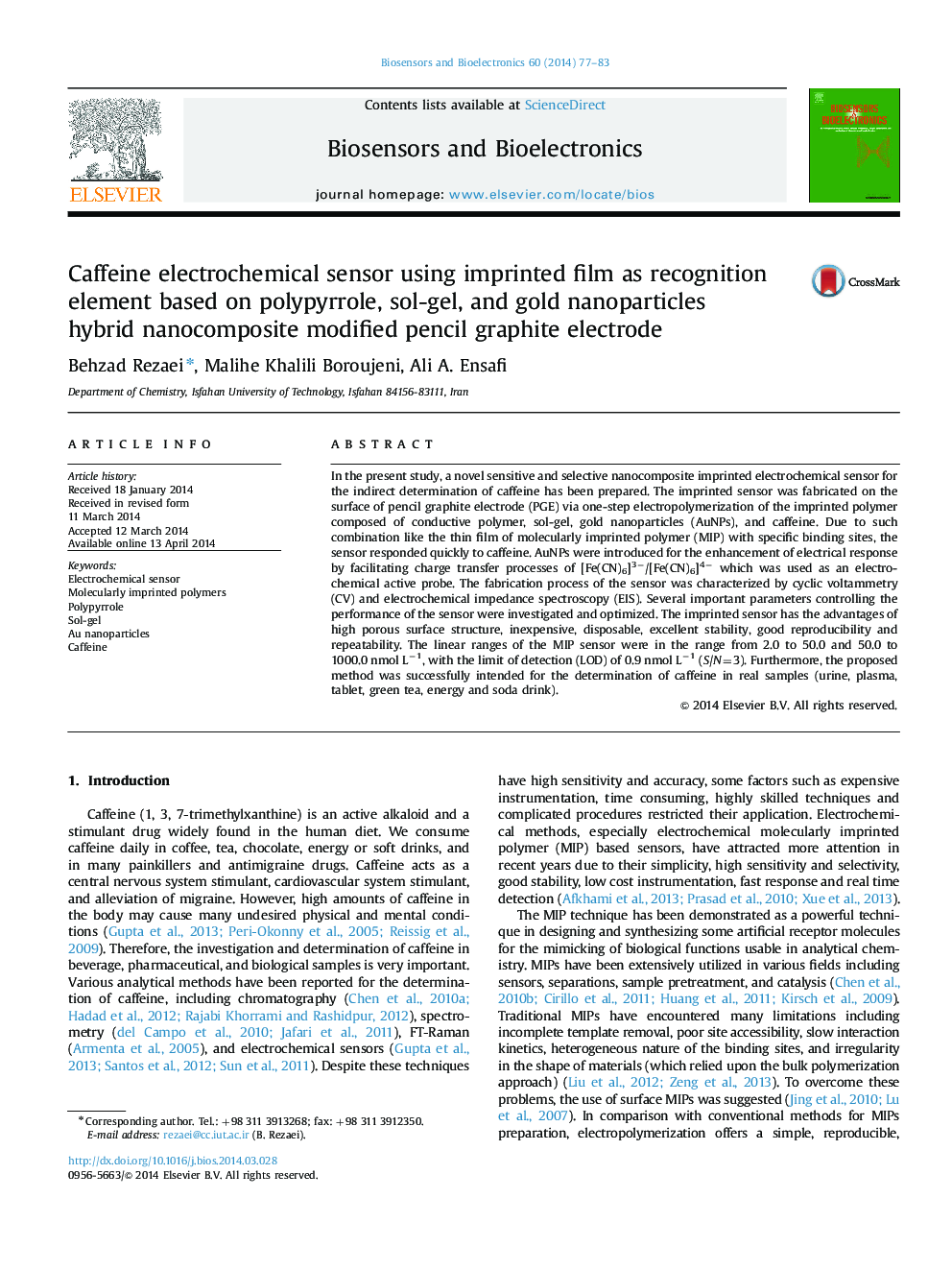| Article ID | Journal | Published Year | Pages | File Type |
|---|---|---|---|---|
| 866419 | Biosensors and Bioelectronics | 2014 | 7 Pages |
•A novel nanocomposite MIP recognition electrochemical sensor has been developed.•Au nanoparticles embedded in composite to improve electrical performance of sensor.•It was made simple and fast for sensitive and selective determination of caffeine.•The proposed sensor can be used to determine caffeine in different real samples.
In the present study, a novel sensitive and selective nanocomposite imprinted electrochemical sensor for the indirect determination of caffeine has been prepared. The imprinted sensor was fabricated on the surface of pencil graphite electrode (PGE) via one-step electropolymerization of the imprinted polymer composed of conductive polymer, sol-gel, gold nanoparticles (AuNPs), and caffeine. Due to such combination like the thin film of molecularly imprinted polymer (MIP) with specific binding sites, the sensor responded quickly to caffeine. AuNPs were introduced for the enhancement of electrical response by facilitating charge transfer processes of [Fe(CN)6]3−/[Fe(CN)6]4− which was used as an electrochemical active probe. The fabrication process of the sensor was characterized by cyclic voltammetry (CV) and electrochemical impedance spectroscopy (EIS). Several important parameters controlling the performance of the sensor were investigated and optimized. The imprinted sensor has the advantages of high porous surface structure, inexpensive, disposable, excellent stability, good reproducibility and repeatability. The linear ranges of the MIP sensor were in the range from 2.0 to 50.0 and 50.0 to 1000.0 nmol L−1, with the limit of detection (LOD) of 0.9 nmol L−1 (S/N=3). Furthermore, the proposed method was successfully intended for the determination of caffeine in real samples (urine, plasma, tablet, green tea, energy and soda drink).
